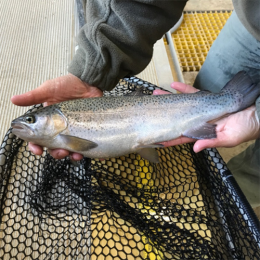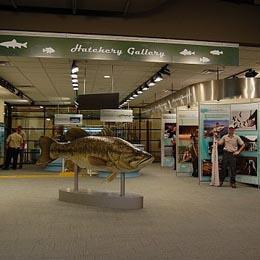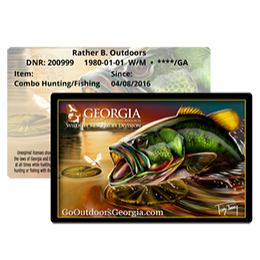
By Terry W. Johnson
Each fall thousands of Georgians sometimes referred to as leaf peepers make the trek to North Georgia to enjoy Mother Nature's annual Fall Foliage Show. During this eagerly awaited extravaganza, a kaleidoscope of colors stretches across the countryside. Blotches of yellow, red, orange transform the landscape into a giant tapestry of color.
It goes without saying that nowhere else in the state can you enjoy a display of autumn foliage of this magnitude. Nevertheless, you can stage your own show in your backyard.
Mother Nature begins preparing for the big event on June 21, the day of the summer solstice. On that date, the Earth begins slowly tipping on its axis. From that day forward until well into winter, minute by minute each day is shorter than the last.
This has a tremendous impact on plants since they rely on sunlight to make food. The magical chemical that allows plants to convert the sun's energy into food is called chlorophyll. Chlorophyll also gives plants their color. It is so abundant that it usually masks other pigments found in leaves.
As the available sunlight wanes, plants use their chlorophyll faster than it can be replenished.
Once it is used up and converted into colorless chemicals, the long hidden-colors within the leaves, such as orange and yellow, become visible. Some plants convert their sugars and other chemicals into anthocyanins. Since these compounds are red, as the chlorophyll in their leaves is lost, the leaves are seemingly set ablaze with shades of red, maroon and orange.
Many oaks don't display the vibrant colors of sweetgum and sassafras, because their leaves contain huge amounts of tannin. As a result, they simply turn brown. A notable exception is the scarlet oak.
The leaves of this oak turn bright scarlet in fall, making them one of the most attractive trees adorning Georgia's woodlands.
One of the reasons why the fall foliage show is show so spectacular in the mountains is because the showy foliage is actually composed of a mosaic of colors. The different shades of red, yellow and maroon are created by the leaves of a wide variety of plants. Each plant has its own special colors, enabling veteran leaf watchers to identify them from afar.
Keep this in mind if you want to create your own backyard foliage extravaganza: Try to set out trees, shrubs and other plants that will display an assortment of fall colors. With that end in mind, let's look at small sampling of native plants that will enable you to create the dramatic show you envision.
Flowering dogwood: In autumn, the elliptical leaves of this small tree vary from maroon to red.
Bald cypress: In the fall, the feathery needles of this large tree turn a pleasing bronze-red color.
Sweetgum: The star-shaped leaves of this ubiquitous tree vary in color from yellow to maroon and crimson in autumn.
Yellow poplar: The bright yellow fall foliage of this stately tree dominates the landscape wherever it is found.
Shagbark hickory: Once found only in hardwood forests, shagbark hickories can now be seen growing in large yards. This is no surprise as its distinctive dark gray exfoliating bark and golden yellow fall foliage make this tree a show-stopper.
Red maple: This fast-growing, medium-sized tree is ideally suited as a shade tree. In autumn, its distinctively shaped leaves display tones of red.
Sourwood: The sourwood is a small to medium-sized tree prized both as a source of nectar for bees and other wild pollinators and for its bright red foliage accented with clusters of green fruit.
Redbud: This small tree is often planted for its stunning purplish pink early spring flowers. However, in fall its yellow to greenish yellow heart-shaped leaves are pleasing to the eye.
Sassafras: This tree’s leaves are either one- or two-lobed. The one-lobed leaves look much like mittens. Although the tree is small, in autumn the visual impact of its red, yellow or orange foliage rivals anything on display across the countryside.
Blackgum: Found throughout the state, this medium to large tree makes a major contribution to fall foliage shows wherever it grows. The blackgum's fall foliage is bright red.
Smooth and winged sumac: Both of these small trees can be grown as ornamentals in backyard settings. Keep in mind both will spread from horizontal roots and quickly form thickets. The fall foliage of each is breathtaking. Both trees are short-lived and easily damaged by storms.
Muscadine grape: The muscadine demonstrates that the fall foliage show is not comprised solely of the leaves of trees. The plant's woody vines will often climb 100 feet or more into a tree. There it lives in relative obscurity until fall. Then, its green foliage transforms into cascades of clear yellow leaves.
Vacciniums: There are many vacciniums, commonly referred to as wild blueberries, that grow wild across Georgia. The fall foliage of these plants varies from maroon to red. These often inconspicuous plants contribute colorful splashes of color to the fall tapestry.
Oakleaf hydrangea: The oakleaf hydrangea is a handsome native shrub known for its beautiful blossoms and fall foliage. In autumn, the shrub's large oak-shaped leaves vary in color from crimson to bronze.
Before you decide to add any of these plants to your landscape, I strongly urge you to do a little research and find out which ones will grow in your area as well as their soil and shade tolerances.
Whether you make an annual pilgrimage to North Georgia to enjoy the fall foliage or simply sit in your backyard enjoying the show staged in your yard, there is no better time of the year to be outside enjoying the beauty of the natural world.
Terry W. Johnson is a retired Nongame program manager with the Wildlife Resources Division and executive director of The Environmental Resources Network, or TERN, friends group of the division’s Nongame Conservation Section. (Permission is required to reprint this column.) Learn more about TERN, see previous “Out My Backdoor” columns, read Terry’s Backyard Wildlife Connection blog and check out his latest book, “A Journey of Discovery: Monroe County Outdoors.”
 An official website of the State of Georgia.
An official website of the State of Georgia.




